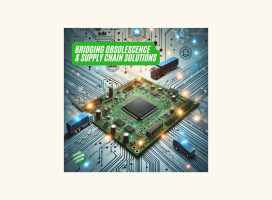Last Time Buy vs. Last Time Offering
A widespread practice among original equipment manufacturers (OEM) is the last time buy (LTB) event, which is usually a warning call to customers that a product is approaching its end of life (EOL) stage. This practice varies in its execution, but it usually takes the shape of a six-month EOL notice with a six-month LTB for the product. This one-year window allows customers time to estimate and fund open demand and prepare for any product upgrades. A typical EOL/LTB cycle is not a concern or customers whose needs end with the EOL or those who can easily upgrade. However, this is where the nightmare begins for those customers who cannot.
For a customer who cannot upgrade, the EOL notice represents an ending to business as usual and sometimes prompts a never-ending scramble to find a pragmatic sustainment solution for their products’ life cycle requirements. The EOL/LTB offering also creates havoc for OEMs whose operation department must meet the demand of customers who usually fail to forecast and continue to plead for “just one more build” long after the final LTB is completed.
To combat this common occurrence and to satisfy their customers’ needs, OEMs invest their money, their customers’ money, and their distributors’ money in pre-stocking agreements for an unreliable forecast resulting in losses when the forecast fails and their warehouses fill up with unused components.
A better and less risky practice for OEMs is a last time offering (LTO). An LTO is a notice that the product is changing from the active stage to a legacy life cycle stage, under which the OEM will transfer its continued availability and support to a third-party legacy equipment manufacturer who specializes in supporting legacy products.
OEMs who transition products using an LTO vs. an LTB significantly reduce their obsolete component inventory without losing the additional LTB revenue bumps that OEMs have come to expect.
An LTO also secures the intact survival of test gear and equipment that are usually salvaged for parts when the production of a product ends. This LTO also gives the OEM sales staff an additional tool to position the LTO as a sales proposition at the beginning of the customer engagement.
OEMs have more options at hand than they have ever had to minimize their risk and maximize the full revenue from their product designs, benefiting both the OEMs and the customers.




